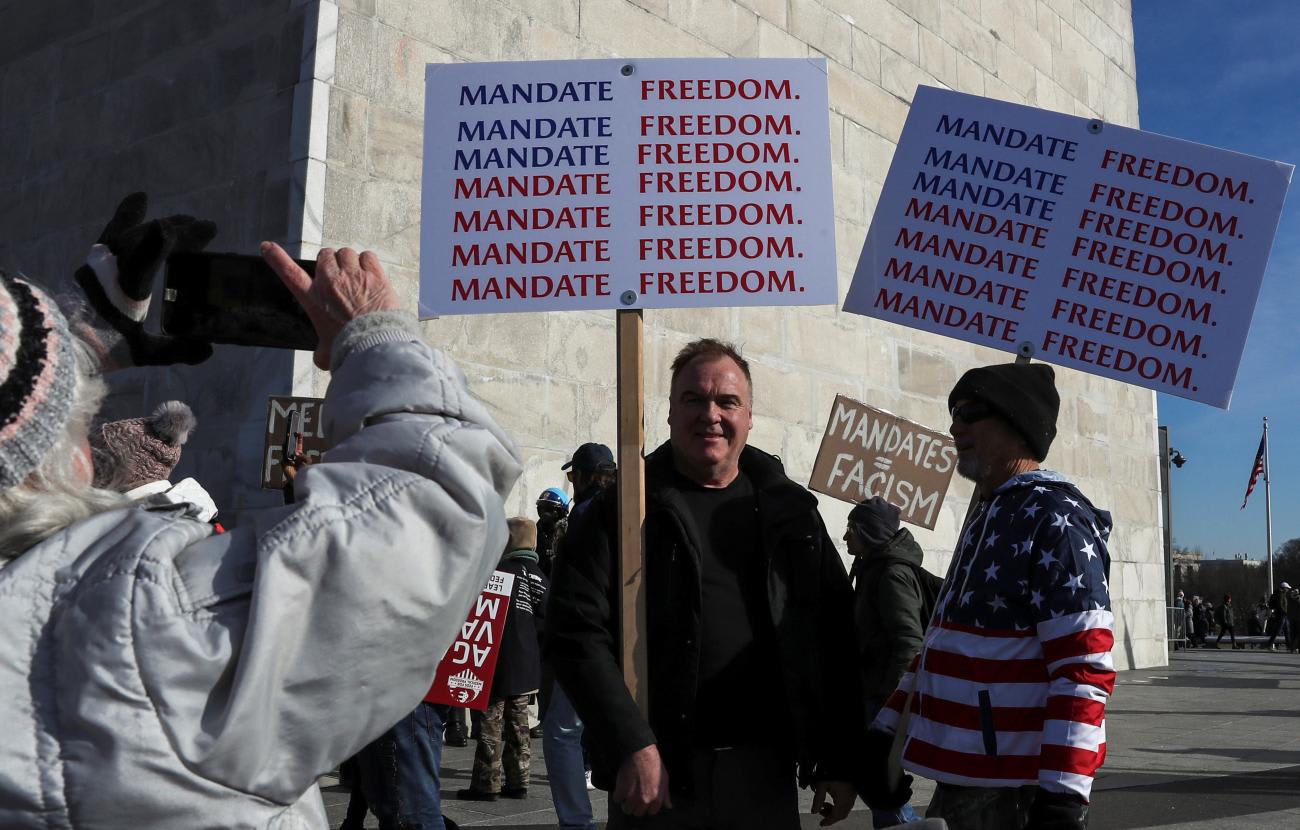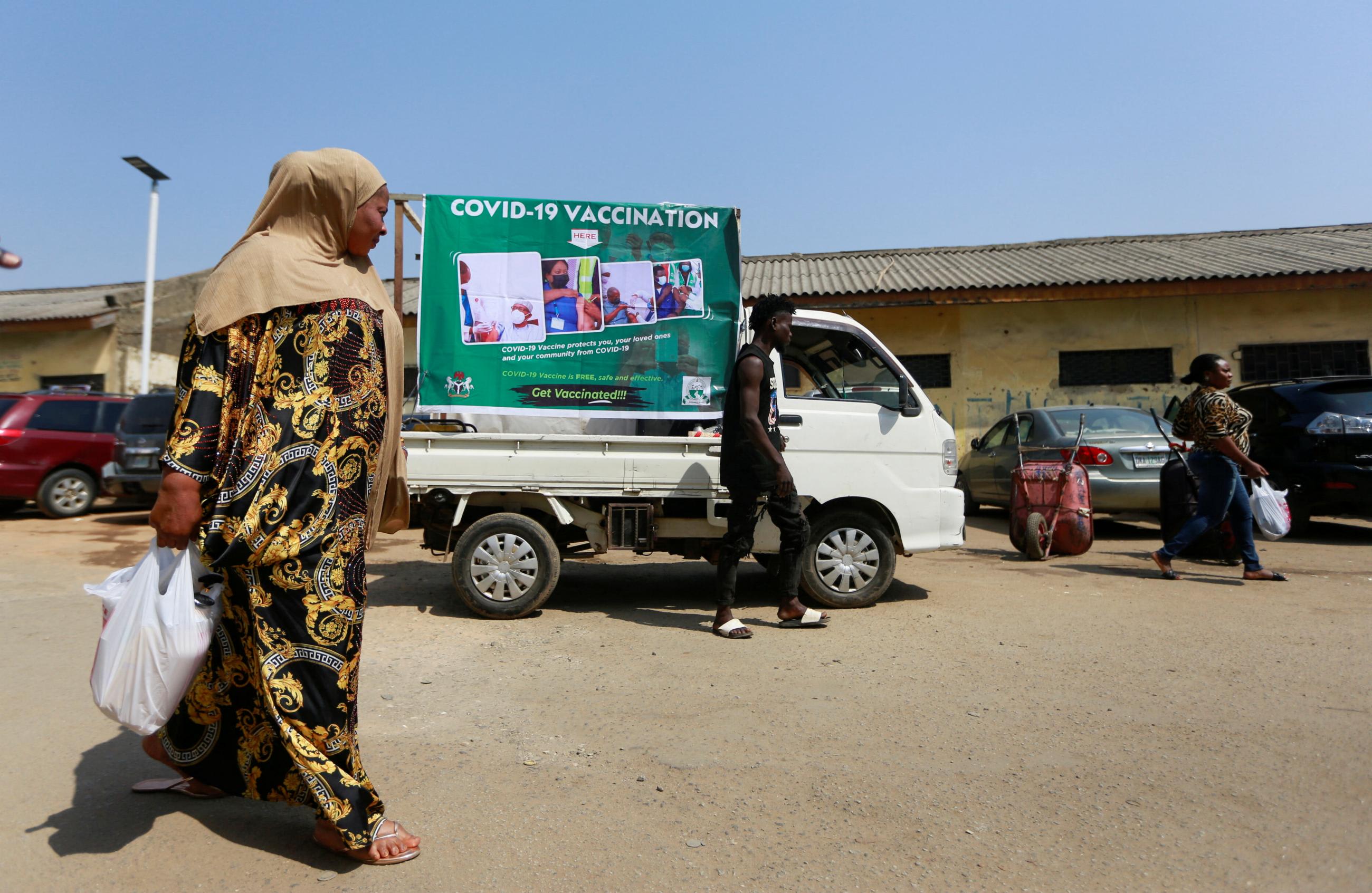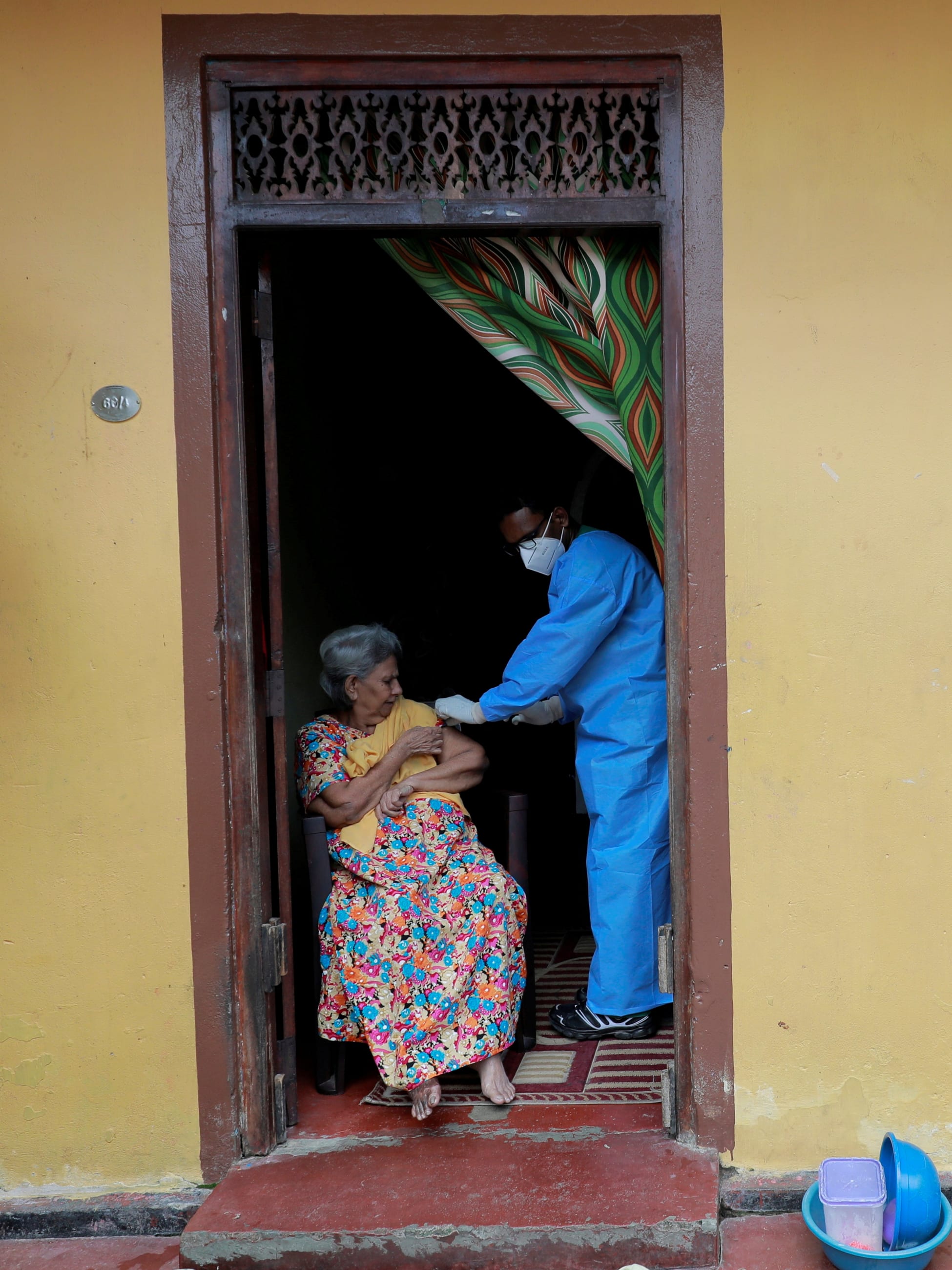As the world lurches toward its third year of the COVID-19 pandemic, political leaders, public health officials, and media outlets have increasingly highlighted "vaccine hesitancy" as a significant concern. While vaccine hesitancy indeed deserves attention, we know from past vaccine campaigns that reluctance or resistance to vaccination is neither a single phenomenon nor a stable one.
Distrust in medicine often emerges through historical processes. For example, in northern Nigeria, communities protested against oral polio vaccines in part because leaders fueled unfounded rumors that it led to sterilization, but also in part because communities had genuine concerns that the vaccine was being prioritized over their other pressing health concerns.
Worrying outcomes or those perceived as worrying also raise suspicions. A 1996 clinical trial for a Pfizer antibiotic to treat meningitis caused an uproar and eroded trust in Western-manufactured vaccines as communities sued the company over harm to children who participated in the trial. Pfizer settled the suit, but the company claims the negative health outcomes were a result of meningitis, not the medication. In 2012, in Carmen de Bolívar, northern Colombia, some groups of adolescent girls who had received the HPV vaccine reported patterns of worrying symptoms. The government's insistence—based on a scientific investigation—that it was all psychological and unrelated to the vaccine resulted in diminished uptake not only of HPV vaccines but of others as well.
Geographies of blame are racist and colonial, and an ineffective means to make sense of the reasons that contribute to people remaining unvaccinated
To be abundantly clear: vaccine hesitancy most certainly exists. But how, and on what terms, are matters related to specific social and historical contexts rather than to be assumed a priori. What's more, moving from "vaccine hesitancy" to "the vaccine hesitant" can be a fast-and-loose change in perspective. And framing "the vaccine hesitant" as a category of people, rather than framing vaccination as a set of availability, accessibility, and trust conditions to address, is a critical error—both factually and tactically. Invocations of "vaccine hesitancy" can say as much, if not more, about the people deploying the term and the context in which it is used than about the people the term labels.
Here, we propose three cautions surrounding such "hesitancy-talk"—that is, invoking vaccine hesitancy as a stand-in for other matters. These other matters may indeed be related to decision-making around vaccine uptake, but often, they are matters of access—to vaccines, to health care, and to health information. Thinking through these cautions illustrates how hesitancy and access are both social and material. But how they are social and material, and on what terms, should be specified rather than assumed. Doubling down on hesitancy assumes a particular endpoint for vaccination. We caution against such terminal thinking, and offer alternatives that foreground vaccination as a social and emergent process, and one that is certainly not over after one, two, or three COVID-19 shots.

Caution 1: Blame Doesn't Work
Blame-focused descriptions of hesitancy are at odds with public health goals and the aim of increased vaccine coverage. People absorb discourses of blame in ways that affect decision-making. For example, research in Canada documented that associations of the HPV vaccine with promiscuity made some young women hesitate at their doctors' recommendations for the vaccine.
Blame is also directed at geographies and peoples. In the fall of 2021, Albert Bourla, Pfizer's CEO, and Boris Johnson, the prime minister of the United Kingdom, both stated publicly that Africans were more vaccine hesitant. In fact, a paper collating a range of studies on COVID-19 vaccine acceptance across low- and middle-income countries showed higher vaccine acceptance across Africa, Asia, and South America than in Russia or the United States. The African CDC found that 79 percent of residents in fifteen African countries were eager to get vaccinated against COVID-19.
"Hesitancy is a red herring when it comes to immunization in Africa," wrote Azfar Hossain, Stephen Asiimwe, and Louise Ivers, physicians and epidemiologists at Harvard. "At best, claims of widespread vaccine hesitancy across African nations are uninformed speculations, not supported by data. At worst, they are deliberate attempts to distract audiences from the injustice of unequal access to lifesaving COVID-19 vaccines by blaming Africans."
Hesitancy is a red herring when it comes to immunization in Africa
Azfar Hossain, Stephen Asiimwe, and Louise Ivers
The pushback is telling. Not only are geographies of blame racist and colonial, but they also are ineffective means to make sense of the variety of reasons and conditions that contribute to people remaining unvaccinated. Such geographies are often imagined and generic. They rely on assumptions about social homogeneity when in fact internal heterogeneities such as race, class, gender, sexuality, and ethnicity both shape and are shaped by uneven access to health information and health care.
To shift vaccine uptake, it is also necessary to shift erroneous assumptions about vaccine relations that guide many policies. There is an erroneous assumption that vaccination and health care are easily separable. There is a mistaken assumption that when someone does agree to be vaccinated, health-care inequities have been adequately redressed. And there is a pernicious and bad-faith assumption that individuals are only motivated to vaccinate to protect themselves, when data show that many people, including minority groups, are also likely to seek out vaccination because it protects them and their community.
Consider Ben Kasstan's research on Haredi Jewish families in the United Kingdom. The families reluctant to vaccinate their children argued that labels such as "non-compliant communities" only further eroded trust between families and health-care providers, who have the greatest potential to increase vaccine confidence. As physician Rhea Boyd points out in the U.S. context, invocations of vaccine hesitancy can cast Black and brown communities as the problem, obscuring the need to address access to health care as a barrier to vaccination. Health systems need to be more imaginative and creative than simply assuming—or demanding—blind trust. Understanding vaccine relations rather than assuming them can guide policies moving forward.

Caution 2: Addressing "Hesitancy" Does Not Address the Whole Problem
Tensions between beliefs that manifest as resistance to vaccination, and public health responsibility through vaccination, are unlikely to be resolved through an emphasis on "vaccine hesitancy" alone. Several years into the COVID-19 pandemic, efforts at vaccine mandates continue to demonstrate that mandates may increase vaccine coverage but may not decrease hesitancy. Vaccinating someone, addressing hesitancy, and broadening access to health care are not the same thing. A study in Austria, for example, where Chancellor Alexander Schallenberg has called COVID-19 vaccine resistance an "attack on our health-care system" while advocating for a vaccine mandate, found that people who supported opposition parties were less likely to trust government vaccination drives. The authors noted that, "the strong correlation between distrust in the vaccine and distrust in authorities suggests a common cause of disengagement from public discourse."
Punitive framings of public health interventions risk undermining the ultimate goals of protecting people's health and rights. Debates over "punitive mask culture" take a similar tenor as the specter of excessive punishments for people who are hesitating to get vaccinated. As the authors of Three Shots at Prevention argue in the case for HPV vaccines, vaccines seem like a simple solution and a strong disease prevention effort. But, they suggest, "As magic bullets promising intangible benefits against uncertain future perils, they inevitably provoke extreme responses: an optimism that can verge on fantasy and a skepticism that can carry over into rejection."
Regardless of whether vaccines are made mandatory or not, reaching high vaccine coverage requires a diversity of tools
Vaccine mandates exemplify this uncertain and incomplete link between vaccination and public health. Researchers who examined France's COVID-19 "pass sanitaire" as a form of compulsory vaccination found that "coercive measures such as mandatory vaccination can be effective in raising vaccination rates, but do not solve all of the issues that affect uptake" and suggested that "regardless of whether vaccines are made mandatory or not, reaching high vaccine coverage requires a diversity of tools."
Such tools are likely to succeed when they are tools of social engagement. For instance, the anthropologist Elisa Sobo concluded in her research on childhood vaccination practices (and reluctance) among parents that "vaccination-related practices… are significantly social events," and as complex as other social, cultural, or identity-related process. This means that affording health access on large-scale and socially-determinant terms matters for vaccination.
As the anthropologist-physician and founder of Partners in Health, Paul Farmer, warned: "If people's ignorance about the COVID-19 vaccine isn't the primary problem, we shouldn't make it the primary problem. We can focus on this as a structural issue and solve it rather than a personal issue."
And Jonathan Cohen and Sofia Gruskin of the Institute on Inequalities in Global Health argued that, "guaranteeing people a measure of economic and social security might also decrease the need to adopt coercive mandates to protect public health."
An aggressive focus on mandates as a response to hesitancy can obscure and obstruct paths toward socioeconomic security, such as broadening health-care access and reducing corrosive and widespread disinformation. If someone who is initially hesitant to get a COVID-19 vaccine gets a requisite two shots because of a government or workplace mandate, that certainly improves overall coverage and protection for them as an individual. But it does not necessarily indicate that the individual will be less skeptical of vaccinations, health-care institutions, government, or medical expertise going forward.

Caution 3: "Fully Vaccinated" Is A Shifting Category
In the context of the Omicron variant and the shape of the pandemic moving forward, the category of the fully vaccinated person is itself rapidly changing. There is a shadow of uncertainty cast over the coming months and years of life with COVID-19 as longer-term booster efficacy data emerge, variants challenge and change existing vaccine regimens, and global vaccine inequity continues with boosters for some, and zero shots for others. The U.S. Centers for Disease Control and Prevention differentiates between "fully vaccinated" (two shots) and "up to date" (two shots with a booster) for COVID-19 vaccines based on age, health status, and first date of vaccination. Israel has begun providing fourth shots to certain populations. Pharmaceutical companies are developing omicron-specific boosters but it remains unclear how, when, and under what conditions they will be integrated into the series of existing shots.
Regardless of the specificity of the vaccine itself, one thing remains clear: adding and/or changing the course of any vaccination series is itself a social process. So far, vaccine rollout has shown this relationship to be geographically and socio-economically contingent, unstable, provisional, and highly uneven.
"Rollout" to date has been the unfolding of supplies on starkly unequal terrain. Despite mounting pressure on governments, supply-side issues continue to haunt the planet. The knowledge and technology required to scale up production of safe and effective COVID-19 vaccines lies in the control of a handful of powerful governments and pharmaceutical companies. These entities have failed to share vaccine technology and blocked efforts for over a year to temporarily waive intellectual property protections on the vaccines, treatments, and testing. The result is that while nearly 70 percent of the people in high-income countries are vaccinated, just around 10 percent in low-income countries are.
If fully vaccinated equals three doses, vaccine coverage in low-income countries is close to zero percent
Madhu Pai, McGill University
And yet, discourse around vaccination in high-income countries seems so focused on a national fantasy of total and full vaccination that these inequities remain muted or twisted in news headlines. When the New York Times published a headline in April 2021 noting that "millions of people" (in the United States) who got their first Pfizer or Moderna shot—or 8 percent of recipients—hadn't gone back for their second one, the narrative obscured that the same data indicated that 92 percent had gotten their second shots. Nonetheless the piece concluded that, "access to vaccines is not the sole barrier; people's attitudes contribute, too."
As Katherine Wu's analysis of the shifting grounds of the term "fully vaccinated" suggests, first doses remain essential; the unvaccinated are still the ones who are most at risk. And McGill University global health expert Madhu Pai pointed out in December 2021 that "if fully vaccinated equals three doses, vaccine coverage in low-income countries is close to zero percent."
Before invoking vaccine hesitancy, we suggest policymakers consider first and foremost how hesitancy is structural and social. Authorities should carefully consider how proposed vaccination efforts may do little to change barriers to vaccine uptake and to trust. They should remember that the category of unvaccinated people and the "vaccine hesitant" among them remain dynamic. To better address that dynamism, authorities need to develop robust and equity-focused public policy during this protracted global health crisis. Such policies should focus on processes for access—along the entire cascade from increasing supply to eliminating barriers. Such policies should refrain from mapping "vaccine hesitancy" onto imagined and often inaccurate categories of people.
"Hesitancy-talk" is certainly not going away, but the causes and conditions of hesitancy should always be foregrounded. For example, discussions of hesitancy that do not address misinformation and disinformation are often obscuring the role of negligent and nefarious health institutions and media companies that promote and circulate disinformation globally. This may intersect with questions of access but may not be the same thing. Funding to support vaccination in countries where supplies exist, and in countries where supplies remain meager, should approach health decision-making as intersocial and structural rather than an intractable individual position.













